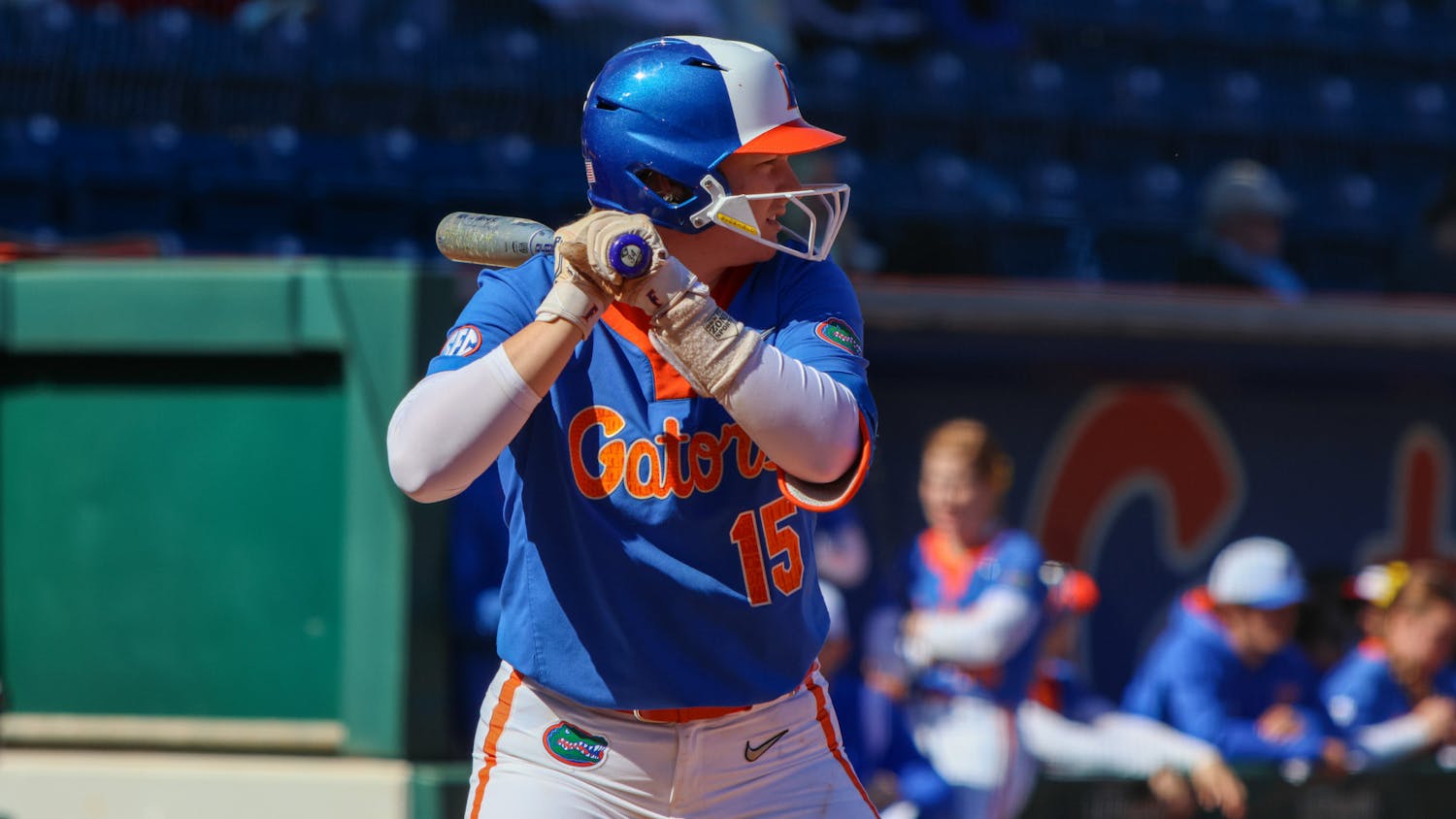After watching another two-hour lecture on my computer, I wondered: Why I am getting such a mediocre education?
I can’t help but feel that the “quality education” I’m receiving from UF is a sham.
There is no way you can say watching a lecture on a 13-inch laptop screen (without the ability to ask questions live or hear what your “peers” are asking in the class) is the same as attending a live class.
If I wanted to watch video lectures, I would have stayed home and watched better professors via MIT’s OpenCourseWare for free rather than watch someone read off pre-prepared slides from a textbook company in a monotone voice.
It’s insulting that UF charges as much for this as a real class when better schools do it for free. What’s even more upsetting is that more of the business school’s classes are going to be delivered in this format. Many of the required courses for accounting already are.
UF doesn’t seem to care what students think about these classes, but that isn’t surprising. You’re simply one of 50,691 students.
They have to teach all those students somehow. When they’re unable to fit any more students into an already crammed lecture hall of hundreds, they have to turn to other options.
They’re simply using the same strategy as other similar state universities like the University of Central Florida, the University of South Florida or Florida State University. They want nonstop exponential growth.
But how is this kind of nonstop exponential growth possible in a “natural market” like the education market? The answer is simple. The U.S. education market isn’t a natural market.
It’s currently in a bubble that’s the result of incredibly loose liquidity for buyers, very much like the real estate market pre-2007.
No matter who you are, what your credit score is, or what school you’re going to, you can receive a student loan in the U.S. It’s guaranteed by law and ensured by the Department of Education’s Direct Loan program.
The plentiful grants provided by them have also helped whip this market into overdrive, of course. The interest rates on these loans are arbitrarily low, and all that easy credit is allowing anyone to enter the market.
You might wonder why I single out something that sounds ideal — a loan program that allows anyone, from any background, to receive a loan for a college education with a low interest rate. Out of all the government programs one could hate, why would I pick such an altruistic one?
These same warm feelings about granting anyone a loan for college is what led to legislation allowing sub-prime mortgages to run wild from the 1990s through 2007.
The government wanted everyone, no matter their financial credibility, to be able to achieve the American Dream and own a home. After adding a few laws (and removing some others) the federal government basically made it possible for anyone with a pulse to sign a loan for real estate.
The unusually easy access to credit in that market drove prices up at historical rates.
It’s very easy to look back at the market in a bubble and spot the signs of impending trouble, but it’s uncommon for people to notice such signs in the height of the frenzy. Few people have noticed or cared about the looming real estate market crash until 2007, despite the telltale signs.
The education market has the same government-ensured easy access to liquidity, and as a result, the demand for a college education has grown in much the same way.
In what reality is 50,000 people considered a decent size for a university?
This isn’t the normal reaction to this easy credit problem. Outside of the State University System of Florida, this easy credit creates a third party payer problem, where universities raise tuition as much as they want — sometimes over $40,000 — because demand is higher than ever. Students, meanwhile, receive grants and cheap loans underwritten by the government to cover it.
At state universities like UF and UCF, administrators aren’t allowed to raise tuition as they want; the Florida Board of Governors controls tuition rates. Since they can’t raise tuition to take advantage of the increased demand, they opt to increase enrollment. If they aren’t allowed to take an inordinate amount from each student via those loans, they simply try to get as many students as possible.
These giant schools we see today are the warped results of easy credit and are analogous to giant suburban developments in cities like Tampa, Orlando or Phoenix.
These alien schools wouldn’t exist otherwise. When the house of cards falls, they will see a similar fate to those huge swaths of failed subdivisions. I can’t say when that will happen obviously, but growth like this doesn’t go on forever.
Since colleges have become so overpopulated, degrees have become less valuable.
Many graduates have had difficulty finding jobs due to the lower value of their degrees. When this unemployed/underemployed mass of people in the U.S. is large enough, there will eventually be a serious problem with graduates defaulting on their loans.
In no normal situation is a garage-faced generic suburban home worth $300,000 or more.
Likewise, a podcast of a lecture isn’t worth $700, but a year at a private college obviously isn’t worth $40,000 either.
It’s a shame that students have to choose from an overpriced education from a normal-sized college or a cheaper mass-produced education like what is provided at UF.
Students wouldn’t face this dilemma if credit weren’t so easily accessible.
Daniel O’Sullivan is a UF student.





